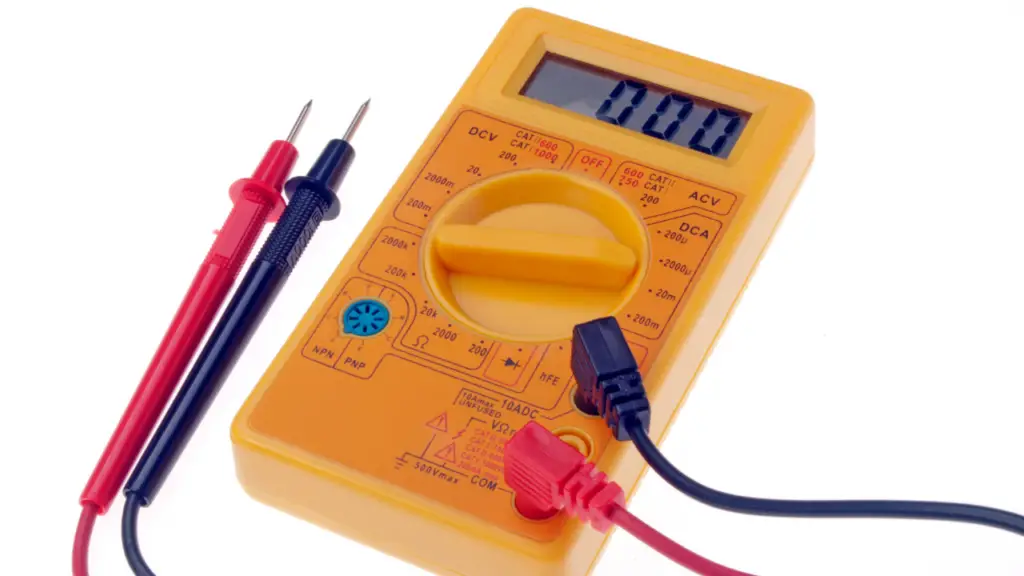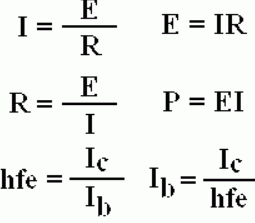What is HFE on a Multimeter?
HFE on a multimeter refers to measuring the “Hybrid parameter Forward current gain in transistors.” It indicates the amplification capabilities of the transistor and is helpful for component selection, troubleshooting, and circuit analysis. Multimeters provide a convenient way to measure HFE values accurately.
Multimeters are versatile electronic measurement tools professionals and hobbyists use to measure a range of electrical quantities. One such measurement that multimeters can perform is the HFE measurement.
In this article, we will explore the concept of HFE, its importance in the realm of multimeters, and how it is measured. Understanding HFE is essential for those working with transistors, as it provides valuable information about their amplification capabilities.
What is HFE?
HFE, an abbreviation for “Hybrid parameter Forward current gain (commonly referred to as hFE),” is a crucial transistor metric.
Transistors are electronic components that amplify electrical signals, and HFE measures their amplification capabilities. It indicates the ratio of the output current to the input current when a transistor is used in a common-emitter configuration.

How is HFE Measured?
To measure HFE accurately, one can rely on a multimeter. Multimeters are equipped with various measurement modes, and some models specifically feature an HFE measurement mode.
In this mode, the multimeter sends a small current through the base and collector terminals of the transistor under test and measures the resulting output current. The multimeter calculates and displays the HFE value by comparing the input and output currents.
How to Interpret HFE Readings?
When interpreting HFE readings, it is important to understand the value ranges and their significance. HFE values typically range from a few to a few hundred. Higher HFE values indicate greater amplification capabilities, while lower values suggest weaker amplification. However, extremely high or low values may indicate faulty or damaged transistors, requiring further investigation.
In some cases, HFE measurements may produce errors due to improper transistor connection or inadequate base current. Troubleshooting such errors involves verifying the connections, adjusting the base current, or replacing the transistor if necessary.
It is crucial to ensure accurate HFE readings to make informed decisions regarding component selection and troubleshooting in electronic circuits.
What is a good HFE for a transistor?
A good HFE (Hybrid parameter Forward current gain) for a transistor can vary depending on the specific application and requirements. Generally, higher HFE values are desirable as they indicate stronger amplification capabilities.
However, there is no universally defined “good” HFE value as it depends on the specific circuit design and the desired level of amplification. It is important to refer to the datasheet provided by the transistor manufacturer, which typically specifies the expected or recommended HFE range for optimal performance in different applications.
How many transistors does a NAND gate have?
rlctalk.com
What are the applications of HFE measurements?
HFE measurements have numerous practical applications in various fields related to electronics. Transistor testing is one such area where HFE measurement plays a vital role. By measuring the HFE of transistors, technicians can assess their quality, ensure they meet desired specifications, and select appropriate components for specific circuit designs.
HFE measurements also find utility in circuit analysis. By analyzing the HFE values of transistors within a circuit, engineers can gain insights into the amplification characteristics, identify potential bottlenecks or inconsistencies, and optimize circuit performance accordingly.
In addition to testing and analysis, HFE measurements are invaluable in electronic repair and maintenance. By measuring the HFE of transistors within faulty circuits or devices, technicians can pinpoint problematic components, replace them if necessary, and restore functionality. HFE measurements enable efficient troubleshooting and enhance the overall repair process.
How to calculate HFE of a transistor?
Calculating a transistor’s HFE (Hybrid parameter Forward current gain) involves measuring the input and output currents and then dividing them to obtain the ratio. Here’s a step-by-step guide on how to calculate the HFE of a transistor:
- Set up the circuit: Connect the transistor in a common-emitter configuration. Ensure that the base, collector, and emitter terminals are correctly connected.
- Apply a known input current: Use a current source or a resistor connected to a voltage source to provide a known input current (IB) to the base terminal of the transistor.
- Measure the input current: Use a multimeter to measure the actual input current (IB) flowing into the base terminal. Make sure to set the multimeter to the appropriate current measurement range.
- Apply a load to the output: Connect a resistor or a load to the collector terminal of the transistor.
- Measure the output current: Measure the output current (IC) flowing through the collector terminal using the multimeter. Ensure that the multimeter is set to the appropriate current measurement range.
- Calculate the HFE: Divide the measured output current (IC) by the measured input current (IB) to obtain the HFE value. The formula is HFE = IC/IB.

It’s important to note that the accuracy of the HFE calculation depends on the precision and calibration of the measuring equipment, as well as the stability of the circuit setup. Additionally, it’s recommended to perform multiple measurements and take an average to ensure more reliable results.
It’s worth mentioning that some multimeters have a dedicated HFE measurement mode that simplifies the process by automatically applying the base current and measuring the output current, providing the HFE value directly without manual calculations.
rlctalk.com
Conclusion
In conclusion, understanding HFE and its measurement in multimeters is crucial for anyone working with transistors or electronic circuits. HFE provides valuable information about the amplification capabilities of transistors, allowing professionals to make informed decisions regarding component selection, troubleshooting, and circuit optimization.
By utilizing the HFE measurement mode on a multimeter, one can accurately measure HFE values and gain insights into the performance and health of electronic devices.






